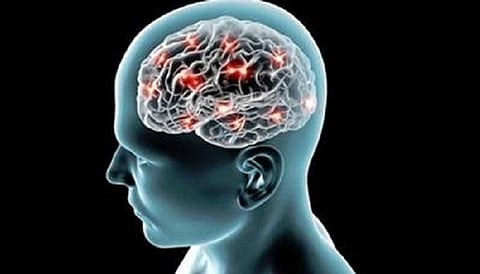
- Home
- न्यूजग्राम
- India
- World
- Politics
- Entertainment
- Culture
- Lifestyle
- Economy
- Sports
- Sp. Coverage
- Misc.
- NewsGram Exclusive
- Jobs / Internships

Researchers have developed a non-invasive brainwave mirroring technology that can significantly reduce symptoms of post-traumatic stress, especially in military personnel.
Post-Traumatic Stress Disorder (PTSD) is a disorder characterised by failure to recover after experiencing or witnessing a terrifying event.
PTSD can cause Insomnia, Anxiety and many other mental problems. Wikipediacommon
The symptoms include insomnia, poor concentration, sadness, re-experiencing traumatic events, irritability or hyper-alertness, as well as diminished autonomic cardiovascular regulation.
"Ongoing symptoms of post-traumatic stress, whether clinically diagnosed or not, are a pervasive problem in the military," said lead investigator Charles H. Tegeler, professor, Wake Forest Baptist Medical Centre in North Carolina.
"Medications are often used to help control specific symptoms, but can produce side effects. Other treatments may not be well tolerated, and few show a benefit for the associated sleep disturbance. Additional non-invasive, non-drug therapies are needed," Tegeler added.
In the study, published in the journal Military Medical Research, the team used a high-resolution, relational, resonance-based, electroencephalic mirroring (HIRREM) — a non-invasive method, in which computer software algorithms translate specific brain frequencies into audible tones in real time.
This provides a chance for the brain to listen to itself through an acoustic mirror, Tegeler said.
The results showed reductions in post-traumatic symptoms, including insomnia, depressive mood and anxiety after six months of using the brainwave technology.
The technology works through resonance between brain frequencies and the acoustic stimulation, where the brain is supported to make self-adjustments towards improved balance and reduced hyperarousal. It requires no conscious or cognitive activity.
The net effect is to support the brain to reset stress response patterns that have been rewired by repetitive traumatic events, physical or non-physical, the researchers said. IANS
